Hey everyone, it’s Rimito the night time electronic music composer!
As I’m writing this article, I, Rimito, am in Korea!
I am traveling abroad for the first time in about 3 years for a week of sightseeing, since the wearing of masks has been changed from mandatory to recommended.
But before I left, I thought that I would like to practice my guitar while traveling.
So this time, based on my experience of taking my guitar abroad many times by air, I would like to write about the basics, things to keep in mind, and things I came up with that would be good to do after the experience.
Please bear with me until the end.
Checking a Guitar onto an Airplane
First of all, let's talk about whether guitars can be carried on board an airplane in the first place. This is possible on most international flights departing from Japan. I will talk in detail about ANA and JAL in turn. Please check the rules of your chosen airline carefully before actually boarding the flight and checking in your guitar. This is just a basic explanation.
Let's start with ANA.
ANA [international flights]
- As a musical instrument, each case is treated as “one piece of luggage”.
- If it is a musical instrument, there is no oversize charge if the total of the three dimensions does not exceed 203cm.
- The weight is limited to 23kg, so there is plenty of room for a guitar.
As of April 3, 2023
As stated on ANA's official website, unlike baggage, it is treated as a musical instrument and the rules for musical instruments apply. However, each case is counted as “one piece of baggage” just like baggage. Also, since the rules for musical instruments apply, even if the total of the three sides exceeds 158 cm (the longest side may be 160 cm depending on the aircraft), the oversize charge will not apply until the total of the three sides is 203 cm.
Also, please note that the “Guitar Case for Check-in Only” in the image below says that you can borrow a case that can hold your entire case, but the loaner case is only available for domestic flights and there are many websites that make it sound as if they are also available for international flights.
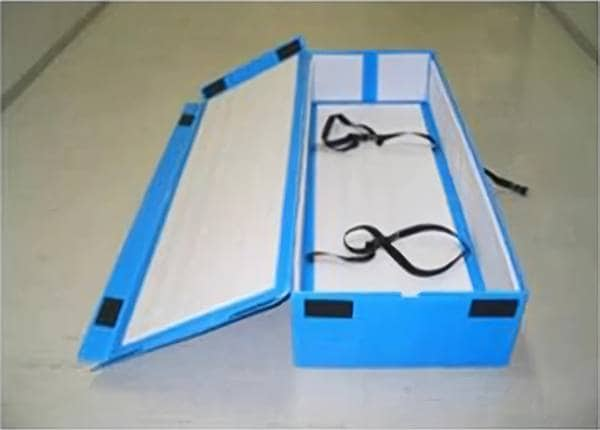
JAPAN AIRLINES
- Each case is treated as one piece of baggage.
- There is no excess baggage charge if the total of the three dimensions does not exceed 203cm.
- The weight is limited to 23kg, so there is plenty of room for a guitar.
As of April 3, 2023
As stated on JAL's official website, unlike ANA, guitar cases are treated as regular baggage. As for the number of pieces, each guitar case is counted as “one piece of baggage” just like baggage. Also, no excess baggage charge will be applied if the total of the three dimensions does not exceed 203 cm.
Also, please note that the Container for Guitars and Small Musical Instruments shown in the image below can be rented, but as with ANA, this is only available for domestic flights.
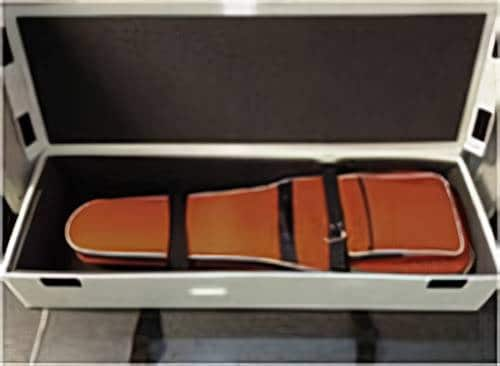
What to do when checking in your baggage
I have actually checked guitars in on JAL and ANA several times. Due in part to the fact that they use conveyor belts to transport large amounts of large luggage at high speeds, it is unavoidable that a certain amount of shock will be applied to the case. However, if the guitar is placed in a sturdy case and properly cushioned, it will almost never be damaged.
So, how do you prepare your guitar?
First, the guitar case. It is the most important thing to protect your precious guitar. I'll post a link to the case I used when I checked it in. It is sturdy and secure, and is a popular product overseas, so I recommend it.
SKB / 66 Hard Case for Electric Guitar
Instead of putting the guitar directly into the case, I wrapped it in thin bubble wrap I bought at a home improvement center before putting it into the case. It's a little tight, but since PETIT-PUCHIT is mainly made of air, you can just push it in. I wrapped the PETIT-PUIT around the body of the guitar, with the grain inside, and fastened it with masking tape. I did the same for the head.
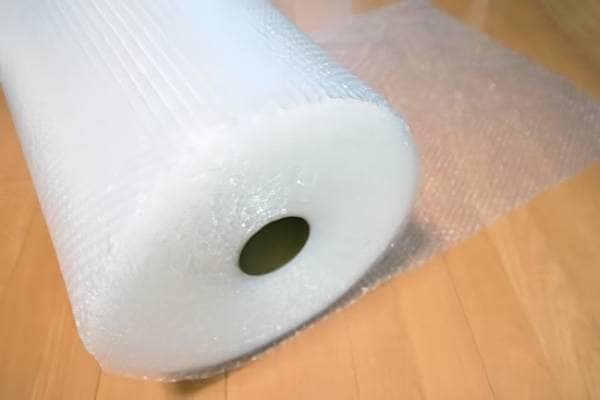
You may wonder why I don't protect the neck, but it has been my experience that many guitars damaged by impact have cracks in the body or broken necks. Cracks can be prevented with plastic wrap, but broken necks are very difficult to prevent. The neck is floating and is hard to protect because of the structure of the case.
Here is one point. You may want to put a capo or something in there, but be sure to secure it when you do so. If you put a capo or something else in there, it will cause scratches on the guitar. It will be sad to see the scratches on the guitar.
Next, I'd like to talk about anti-theft and loss prevention. iPhone users know the AirTag, which I attach to my guitar case. If you are an Android user, I recommend Tile or Chipolo. Both of which are Android-compatible smart trackers.
Now, do all you have to do is throw in a GPS tracker and close the lid?
As a matter of fact, you can lock the case that I just showed you.
As you can see in the image below, there are three fasteners. Out of the three fasteners, the middle one is a cylinder type key.
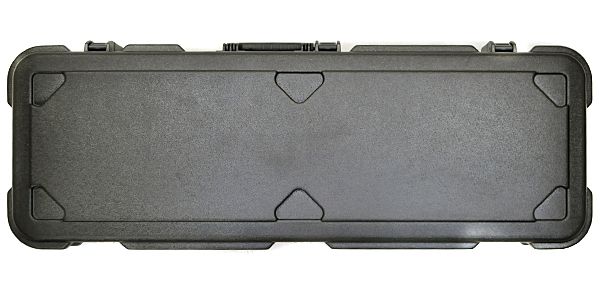
For those who would like to bring their guitars to the U.S.
The key for this case is actually a TSA lock.
When you enter or transit the U.S., your luggage will be inspected, but if you use a normal key, it will be destroyed and you will not be reimbursed. However, with a TSA lock, the airport staff has a duplicate key and can open the lock without breaking it. In addition, the TSA mark is printed prominently on the bottom of the lock, so there is no chance of the staff breaking the lock without realizing that it is a TSA lock. In addition, many travel agencies offer compensation for broken locks if the lock is a TSA lock. In other words, the locks are less likely to be broken during luggage inspections, and if they are broken, passengers are more likely to be compensated.
After locking the case, the next step is to protect the case. As you can see, the case itself is resistant to impact from the corners, and the cushioning material (uneven surface of the case) is designed to soften impact from 18 different directions, so the case alone is sufficient to protect the guitar.
However, if you actually leave the guitar in the case several times, the case will get scratches. I am proud to say that it is proof that I have traveled with my guitar that much, but if you are concerned about it, I think it will be very stressful for you. It also gets a sticker on it.
I say it's proof, but I'm sensitive to scratches on my suitcase, so I try to make sure my suitcase doesn't get scratched. And, it's cheap, so I recommend it to those who don't like scratches on their guitar case.
How to do it: Cover the case with a double layer of large plastic bags from the supermarket.
These plastic bags are soft but a little thick, large in volume, and do not have handles.
Cover the case with a double layer of these bags and secure them tightly with tape. This is the only way to protect the case from smudges and black stains that cannot be removed. It is even better if you put two extra pieces inside the case for the return flight.
Recommended
Finally
I hope you enjoyed this article.
This is my own way of doing things, so I can't make any guarantees, but I hope you will find it useful when you take your guitar overseas.
Have a good musical life!
The “sound & person” column is made up of contributions from you.
For details about contributing, click here.





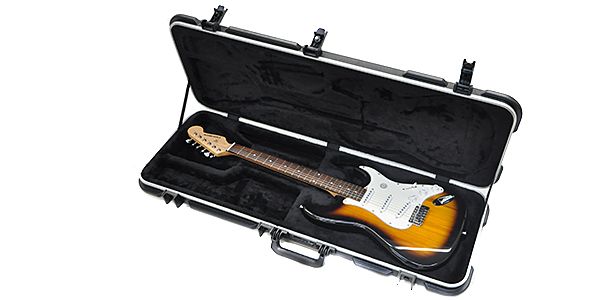








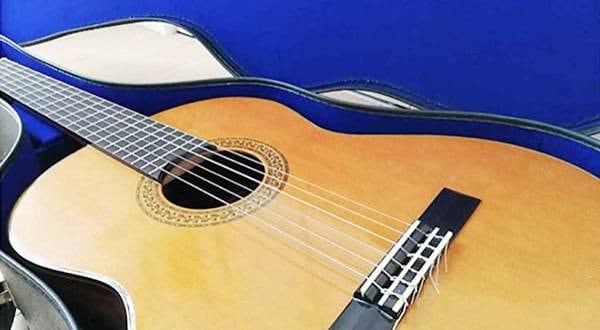
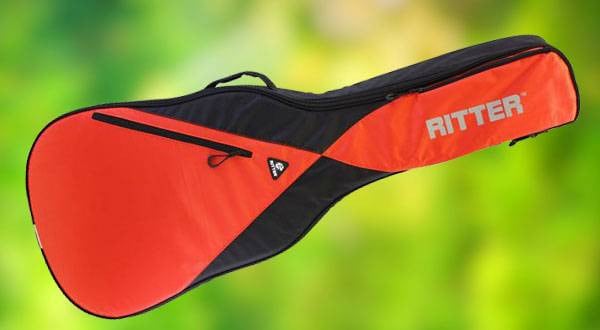
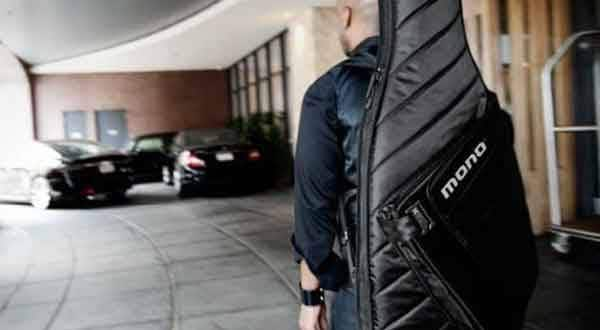
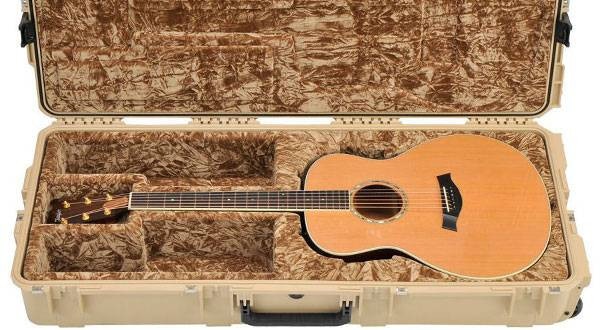
 SKB ギター・ベースケースセレクター
SKB ギター・ベースケースセレクター
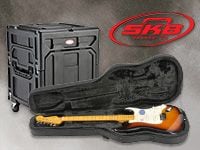 SKBケースのすすめ
SKBケースのすすめ
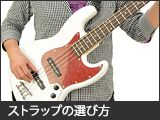 ベースケースの選び方
ベースケースの選び方
 ギターの種類
ギターの種類
 ギターのお手入れ
ギターのお手入れ
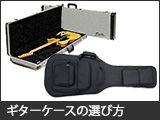 ギターケースの選び方
ギターケースの選び方















